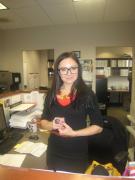4 Most Common Foot Problems (and How To Manage Them)
The human foot is a complex structure, capable of handling lots of stress and pressure caused by daily walking. But carrying loads of pressure puts your feet at increased risk of injury. Numerous foot problems can occur due to poor care, uncomfortable shoes, and daily wear and tear.
Keep on reading to discover the four most common foot problems and how to treat them.
1. Athlete’s foot
Athlete’s foot is a contagious fungal infection that commonly appears in areas between the toes and on the soles of your feet. It can also affect your toenails and spread to the hands. This condition may cause itching or burning sensations between your toes, blisters, and cracking or peeling skin. You can decrease your odds of experiencing athlete’s foot by regularly cleaning and drying your feet and toes, wearing clean socks and shoes, and avoiding walking barefoot in public places. Ways to treat athlete’s foot include taking over-the-counter topical medications and using antifungal sprays and creams. If these solutions fail to treat your symptoms, your doctor may suggest prescription-strength medications or topical steroid medications.
2. Plantar Fasciitis
Plantar fasciitis is a painful condition in which the weblike ligament that connects your heel to the foot gets inflamed or even damaged. Most plantar fasciitis patients experience pain in the bottom of the heel that typically worsens after rest or inactivity. Experts say that plantar fasciitis is common among runners and athletes. Other risk factors for plantar fasciitis include obesity, flat feet, high arches, pregnancy, and an active job. A podiatry specialist may suggest treating your plantar fasciitis with cold compression therapy, rest, orthotic insoles, and NSAIDs like ibuprofen and naproxen. You should achieve improvements within three months after starting the treatment, if not, you may require cortisone shots or even surgery.
3. Bunions
A bunion is a bony bump that appears on the side of your big toe. The changes in the structure of your foot that cause the bump may also cause your big toe to turn inward. This type of foot deformity typically runs in the family, but some conditions like flat feet, abnormal bone structure, and ligamentous laxity can contribute to the development of bunions. Your bunion may get worse over time due to high-heeled or narrow shoes, standing for long periods, and foot arthritis. Nonsurgical treatment for bunions includes over-the-counter painkillers, padded shoe inserts, and taping. If conservative treatment fails to relieve pain and allow normal walking, surgery may be required to correct the position of your big toe.
4. Claw Toes and Mallet Toes
Claw toe is a condition in which your toes bend into a claw-like position. Some individuals may have this deformity from birth and others may acquire it later on. Deformities in your toes may lead to corns and clauses in areas where they rub against shoes. Claw toes may develop due to various causes, including injury and ankle surgery. Health problems that may trigger claw toes include stroke, rheumatoid arthritis, cerebral palsy, and diabetes. Timely diagnosis and treatment may help you avoid severe complications and increase your quality of life. If your toes are still flexible, regular exercises and taping may help correct their position and alleviate painful symptoms. In severe cases, you may require surgery.
A mallet toe is a condition in which the final joint nearest the toenail is bent. Painful corn usually appears at the tip of the mallet toe where it presses against the ground. Often, the second toe is affected due to its length. The main causes of mallet toes include injury and arthritis. Wearing comfortable shoes that don’t press the toe into an awkward position may help manage a mallet toe. The only treatment to correct the deformity is surgery.


